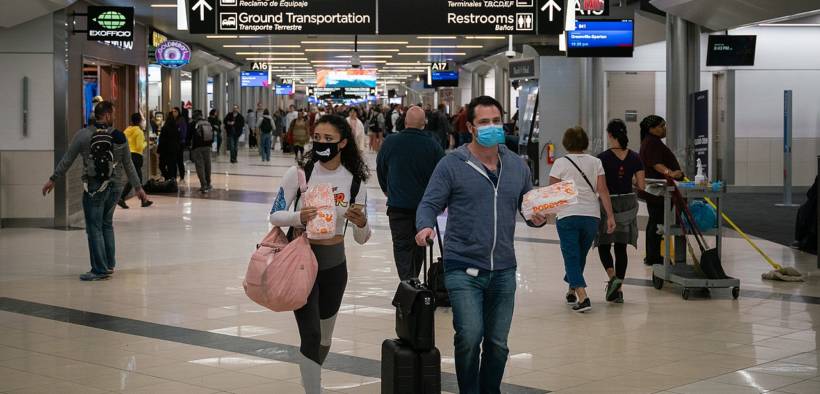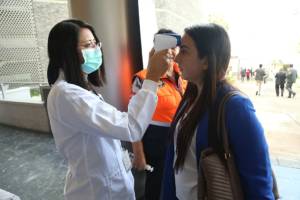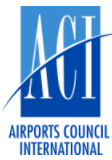IATA and ACI Guidelines for COVID-19 Air Travel Safety

The Airports Council International (ACI) World and International Air Transport Association (IATA) outlined their recommendations for safely reopening air travel amidst the COVID-19 pandemic in a paper released this week.
The Airports Council International (ACI) World and International Air Transport Association (IATA) outlined their recommendations for safely reopening air travel amidst the COVID-19 pandemic in their paper, Safely Restarting Aviation, ACI and IATA Joint Approach. Newly implemented COVID-19-related measures for airports and airlines should rely on scientific evidence and globally consistency.

It is important to note that no single measure can completely mitigate the risk of COVID-19 transmission during travel. Thus, IATA and ACI recommend a layered approach to balance the risk with the need to reopen travel and economies.
Pre-Flight – Passenger Contact Tracing
Governments should create online portals through which passengers can efficiently and safely submit their contact information for tracing purposes. Portals must allow use via a variety of electronic devices such as computers, laptops, tablets and mobile phones. Airlines and airports should require submission of this data prior to the traveler’s arrival at the airport.
Airport Terminal Access
Restricting airport terminal access to workers, travelers and those accompanying travelers with disabilities or reduced mobility, and unaccompanied minors can assist with social distancing and reduce risk of transmission within airports.
Temperature Screening & COVID-19 Testing

Temperature scanners used to identify patients with COVID-19
The paper’s authors note that entry and exit temperature screening have not proven truly effective in delaying or mitigating the pandemic. Even so, they note that such measures can help reassure travelers, while also potentially acting as a deterrent for infected travelers.Temperature screening should take place early on in the passenger process and be performed by medical professionals. Furthermore, it should take place in a way that minimizes the impact on both airport operations and the passengers’ experience.
At the present time, medical experts state that fast, reliable testing does not yet exist. Additionally, they consider antibody tests inept for the purposes of effective COVID-19 containment during travel. For these reasons, they do not recommend testing as a viable solution for mitigating virus transmission during airport travel. IATA and ACI stated that testing should only be implemented once fast, reliable testing has become available. When the reliability of such tests improve, implementation of testing could relieve the need for other upstream screening measures.
Social and Physical Distancing and Use of PPE
Airports implementing social and physical distancing measures should do so in a manner consistent with other modes of public transportation. Such measures are recommended only in the initial phase of reopening. “They are incompatible with the restoration and development of air connectivity over-time given their limiting factor on airport capacity and airline capacity.”
IATA and ACI recommend PPE use within airport terminals in compliance with the local health authority requirements.
Cleaning and Disinfection
Aside from use of PPE, cleaning and disinfection of airports, infrastructure and equipment are the best means of preventing COVID-19 transmission. Cleaning and sanitizing must be carried out on a regular schedule with increased frequency. Updated aircraft cleaning guidelines published by IATA, the CDC, and EASA can help ensure planes are properly sanitized between flights.
Immunity Passports
Quoting the World Health Organization (WHO), the paper noted that to date no study has evaluated whether the presence of SARS-CoV-2 antibodies confers immunity. As such, the use of health certifications to ascertain transmission risks are not considered effective at the present time. Despite that, IATA and ACI do believe immunity passports may further facilitate opening of airports and airlines. Documentation of recovery from COVID-19 could establish possible immunity, thus allowing such passengers to bypass many of the established mitigating factors for boarding and on-board processes. This could potentially exempt them from measures such as face covering and temperature scanning.
Check-In & Boarding
Requiring passengers to utilize online check-in would minimize time in airports. As such, IATA and ACI recommend that governments remove barriers associated with online check-in. Electronic data capture and boarding passes, as well as passes and baggage tags printed at home should replace passes and tags provided at airport check-in whenever and wherever possible. Also, if airport check-in procedures are necessary, passengers should utilize self-service options as well as self-baggage drops to minimize interaction with check-in agents. Implementation of touch-less technology and biometrics are also highly recommended.
Current boarding processes require revision through cooperation between airlines, airports and governments and gate areas may require redesign. Automation – self-scanning and biometrics – should be implemented. Limitations regarding carry-on baggage would expedite the boarding process.
Inflight
The agencies believe, based on the data they’ve evaluated, there is a low risk of COVID-19 transmission between passengers on board planes. IATA recommends the use of face masks aboard airplanes, and therefore find social distancing inflight unnecessary. Providing sanitation wipes to allow passengers to clean their seating area, as well as limiting movement on board can add to travelers’ comfort level.
Arrival Airport
Baggage Claim, Borders and Custom Control

Immigration halls may require restructuring. The agencies further recommend simplifying the border/passport control processes through the use of measures such as passport chips, facial recognition and the use of special lanes. Border control agents should be trained to identify passengers who are ill.
Airports should expedite baggage delivery to prevent passengers from gathering in baggage claim areas.
Transfer Screening
Mutual recognition of screening measures at originating airports could eliminate the need for re-screening during transfer and will eliminate queuing. If not possible in all circumstances, airlines should work with their partners to make arrangements for their shared passengers. Whenever transfer screening is required, sanitary measures must be observed.
IATA and ACI will publish updates to these guidelines as new information regarding prevention of COVID-19 transmission becomes available.








